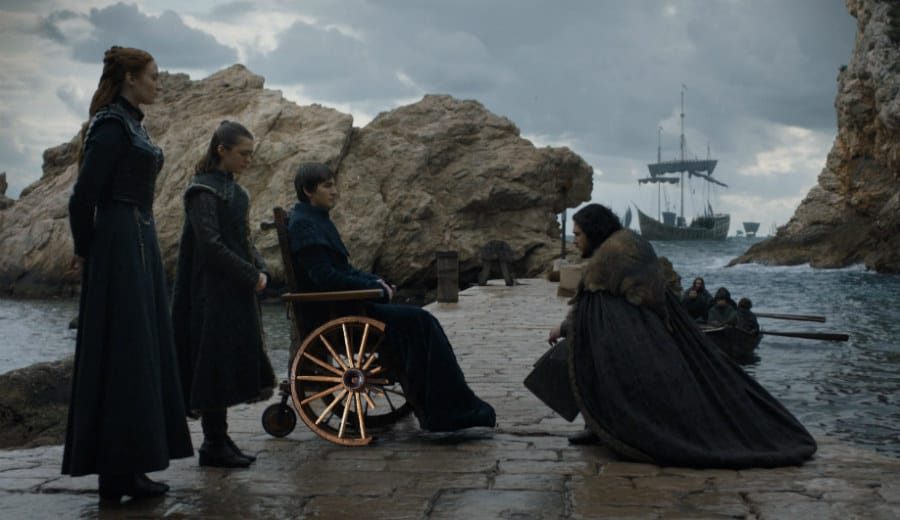
What Happened to Sansa Stark After the War of the Five Kings?
What Happened to Sansa Stark After the War of the Five Kings?
For fans of Game of Thrones, one question has long been on everyone’s mind: what happened to Sansa Stark after the war? We’ve followed her journey from a wide-eyed, naive young girl to a strong and determined woman, but how did she fare in the aftermath of the Great War? Let’s dive into the story and explore the twists and turns that took place.
After the Battle of Winterfell, Sansa was one of the first Starks to set foot in King’s Landing. With her brother Bran as king, she had a front-row seat to the negotiations with the lords of the Seven Kingdoms. She played a crucial role in helping the new ruler navigate the complex web of alliances and rivalries between the different houses. As the Hand of the King, Sansa worked tirelessly to rebuild the realm and ensure the future stability of Westeros.
However, it’s worth noting that Sansa’s experiences during this period were not without their challenges. She had to confront her own feelings about her family’s history with the Iron Throne, as well as the weight of her responsibilities as a member of House Stark. At one point, she even found herself struggling with her own sense of identity, wondering if she was truly worthy of being queen.
One fascinating aspect of Sansa’s storyline after the war is her relationship with Bran. As the Three-Eyed Raven, Bran brought a new level of power and understanding to the role of king, but he also posed certain challenges for Sansa. With her limited experience in governance, she had to rely on Bran’s wisdom and guidance to navigate the complex world of Westeros politics.
Despite these challenges, Sansa proved herself to be an astute and capable leader. She played a key role in helping Bran make difficult decisions about the future of the realm, often taking bold action when necessary. Her dedication to her people and her commitment to justice earned her the respect of many, including those who had previously doubted her abilities.
In addition to her work as Hand of the King, Sansa also found herself at the forefront of a new initiative: the creation of a new order for Westeros. With Bran’s guidance, she helped establish a new system of governance that prioritized justice and equality above all else. This marked a significant departure from the old ways, when power was often held by those who were willing to do whatever it took to maintain their grip on the throne.
But even as Sansa continued to build a better future for Westeros, she couldn’t help but feel a sense of unease about her own place in the world. As a member of House Stark, she had always been defined by her family’s legacy and history, but now that those very same forces were trying to tear her down, she was forced to confront a new reality: who was she without her title or her family?
In many ways, this is what makes Sansa such an compelling character. She has always struggled with the constraints of her family’s expectations, and now she must navigate the complexities of being a leader in a world that is often hostile to those who are different.
One of the most surprising aspects of Sansa’s story after the war is her decision to marry Bran, rather than pursuing a romantic relationship with another man. While it may seem like an odd choice for some fans, this decision reflects both Sansa’s growth as a person and her commitment to justice and equality. By marrying Bran, she was able to solidify their bond as king and queen, while also ensuring that the realm would never again be ruled by someone who used their power to manipulate or control others.
In recent seasons of Game of Thrones, we’ve seen Sansa face many challenges as a leader in her own right. She’s had to navigate the complexities of international politics, build alliances with other nations, and make difficult decisions about trade and diplomacy. Through it all, she’s remained steadfast in her commitment to justice and equality, often finding herself at odds with those who would seek to undermine these values.
So what does the future hold for Sansa Stark? As we look ahead into the unknown, one thing is certain: she will continue to be a force for good in Westeros. Whether she’s serving as queen or simply working behind the scenes to build a better world, Sansa remains a shining example of courage and determination.
As we close this chapter on Sansa Stark’s story, let us ask ourselves an important question: what does it mean to lead? For Sansa, leadership has never been about wielding power or manipulating others; instead, it’s about using her experiences and wisdom to build a better future for all. Can we learn from her example?









